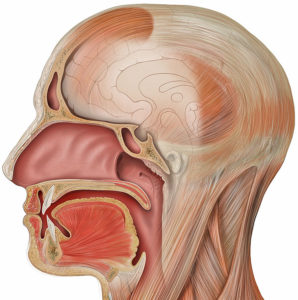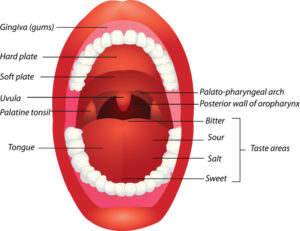You have probably heard this before: when you see someone passing out or having a seizure, in general, losing consciousness due to various reasons, there seems to be always someone saying that you should try to get the poor fella’s tongue out of his mouth so he will not swallow it. This is a myth.
But before explaining that, let’s get some facts straight.
Tongue is an amazing muscular organ that is covered by a thin mucous membrane. It lies partly in the mouth cavity and partly in the oropharynx. It is highly mobile and can be shifted into a number of different positions and also assume various shapes. The tongue’s primary function is often seen as that of being the organ of taste, however, its role in various other activities is also crucial.

Functions of the tongue:
- Taste. The taste buds, the sensory receptors for taste, are located on the tongue.
- Speech. The movements of the tongue are crucial for articulation.
- Chewing and swallowing. The tongue helps the teeth and other parts of the mouth with chewing food and passing it down the throat as the first part of the swallowing process.
- Cleaning. The movements of the tongue dislodge food particles stuck between the teeth, gum and cheek so that it can be spat out or swallowed.
The tongue is a muscular mass and although it is made up of several muscles, all act in conjunction with each other to perform various movements. The tongue muscles can be divided into the intrinsic and extrinsic groups. Broadly the intrinsic muscles can alter the shape of the tongue while the extrinsic muscles change the position of the tongue.

Anatomy of the mouth
Other interesting facts about the human tongue:
- Tongue is the only muscle in human body that works without any support from the skeleton! It is a biological structure known in mammals as muscular hydrostat; the most common recognized muscular hydrostat is the trunk of an elephant.
- There are specific segments on tongue for sensing different tastes. The notion that different parts of the tongue is responsible for sensing different types of tastes (in other words, there are taste belts) is actually a myth. Our tongue can taste sour, sweet, bitter, salty and umami. Umami is actually a very new variant of taste discovered by a Japanese scientist who found that the chemical that is responsible for this taste is monosodium glutamate (the famous “MSG”).
- The tongue is THE STRONGEST muscle in entire body. However, it is at the same time, one of THE MOST SENSITIVE muscles as well.
- Women have shorter tongues compared to males.
- Our tongue has a very unique property. It is incapable of detecting taste if it is dry! This means that if you place a piece of lemon on a dry tongue, you will not be able to tell that it is sour. The tongue gets its ability to sense taste only in the presence of saliva that keeps it moist. The most common source of dry mouth/tongue is the prescribed medication.
- Sticking out your tongue is considered unacceptable behavior in many cultures, but it is a sign of respect in others. In Tibet, sticking out the tongue is a greeting. When two people meet, they stick out their tongues at each other. Among the Maori people of New Zealand, sticking out the tongue is part of a war chant and is meant to intimidate the enemy. If you want to see it yourself and you like rugby, please watch on YouTube the ceremonial Haka before a rugby game of New Zealand (“All Blacks”).
There is a common belief that you can swallow your tongue but it is not actual possible to do it. What the people would actually mean is that tongue can block the opening of the airway (trachea); one of the first things you are taught in basic life support is that if someone is having difficulty breathing you should tilt his/her head and lift the chin; this will help to remove the tongue as an obstruction.
